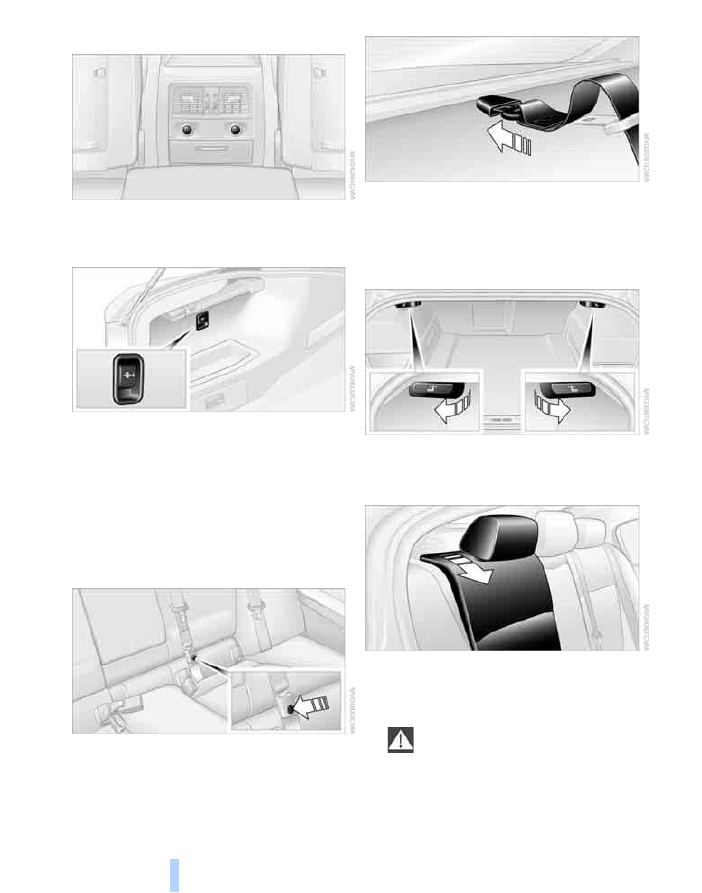BMW 325i Sedan (2006 year). Instruction - part 6

Practical interior
accessories
92
Sockets in the rear center console*
Remove corresponding cover.
Socket in the luggage compartment*
Open the cap.
Through-loading system*
Opening
1.
Open the belt lock of the rear center safety
belt. To do so, press the button, see arrow,
and release the latch plate.
2.
Insert the latch plate at the end of the belt
into the specially designated fixture on the
rear window shelf.
3.
Push the corresponding head restraint
down as far as it will go, refer to page
.
4.
To release the rear seat back, pull the corre-
sponding lever in the luggage compart-
ment.
5.
The unlocked rear seat back moves forward
slightly. Fold the seat back forward by the
head restraint.
Closing
1.
Return the rear seat back to its upright posi-
tion and engage it.
When returning the backrest into its
seating position, make sure that the
seat's locking mechanism engages prop-
erly. Otherwise, cargo could be thrown
around in the event of sharp braking or
swerving and endanger the occupants.
<